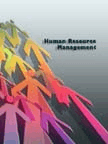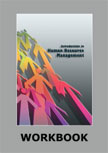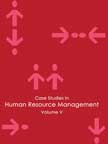Starbucks' Human Resource Management Policies and the Growth Challenge
|
|
ICMR HOME | Case Studies Collection
Case Details:
Case Code : HROB068
Case Length : 12 Pages
Period : 1987 - 2005
Pub Date : 2005
Teaching Note : Available
Organization : Starbucks
Industry : Coffee Retailing
Countries : USA
To download Starbucks' Human Resource Management Policies and the Growth
Challenge case study
(Case Code: HROB068) click on the button below, and select the case from the list of available cases:

Price:
For delivery in electronic format: Rs. 400;
For delivery through courier (within India): Rs. 400 + Rs. 25 for Shipping & Handling Charges
» Human Resource and Organization Behavior Case Studies
» HRM Short Case Studies
» View Detailed Pricing Info
» How To Order This Case
» Business Case Studies
» Area Specific Case Studies
» Industry Wise Case Studies
» Company Wise Case Studies

Please note:
This case study was compiled from published sources, and is intended to be used as a basis for class discussion. It is not intended to illustrate either effective or ineffective handling of a management situation. Nor is it a primary information source.
Chat with us

Please leave your feedback

|
|




<< Previous
"The relationship we have with our people and the culture
of our company is our most sustainable competitive advantage."
-Howard Schultz, chairman and chief global strategist of
Starbucks, in 2002.1
"My biggest fear isn't the competition, although I respect
it. It's having a robust pipeline of people to open and manage the stores who
will also be able to take their next steps with the company."
-Jim Donald, president, Starbucks North America in 2005.2
Introduction
|
In January 2005, when Starbucks Coffee Company (Starbucks) was placed second
among large companies in the Fortune "Best Companies to Work For" survey, it was
no surprise to those familiar with the company's human resources management
policies and work culture.
In general, the retail industry is notorious for its indifferent attitude
towards employees. Despite the fact that employees, especially those on the
frontline, are critical to the success of retail businesses, most companies do
not have a strong relationship with their employees, and consequently suffer
from a high rate of employee turnover (In the early 2000s, employee turnover in
the retail industry was around 200 percent).
|

|
In this scenario, Starbucks stood out for its employee-friendly policies and
supportive work culture. The company was especially noted for the extension
of its benefits program to part-time workers - something that not many other
companies offered. As a result, Starbucks employees were among the most
productive in the industry and the company had a relatively low employee
turnover.
|
|
Though it was popular as an employer, Starbucks' main challenge in
the early 2000s was whether it would be able to continue to attract
and retain the right kind of employees in the right numbers, to man
its rapid expansion program. Although it experienced slow growth in
the initial years the company expanded rapidly after its Initial
Public Offer (IPO) in 1992 and grew at an average rate of around 20
percent per annum.
Analysts said that, in the light of its ambitious expansion program,
Starbucks' generous human resource policies made sound strategic
sense, as they kept the turnover low and provided a ready pool of
experienced employees to support expansion. |
However, by the early 2000s, three possible problems had to
be considered - would the company be able to support its staff with the same
level of benefits in the future, given the large increase in the number of
employees; would the company be able to retain employees if it made any move to
lower its human resource costs by cutting down on benefits; and would Starbucks
be able to maintain its small company culture, an important element in its past
growth.
Starbucks' Human Resource Management Policies and the Growth Challenge
- Next Page>>
|
|









